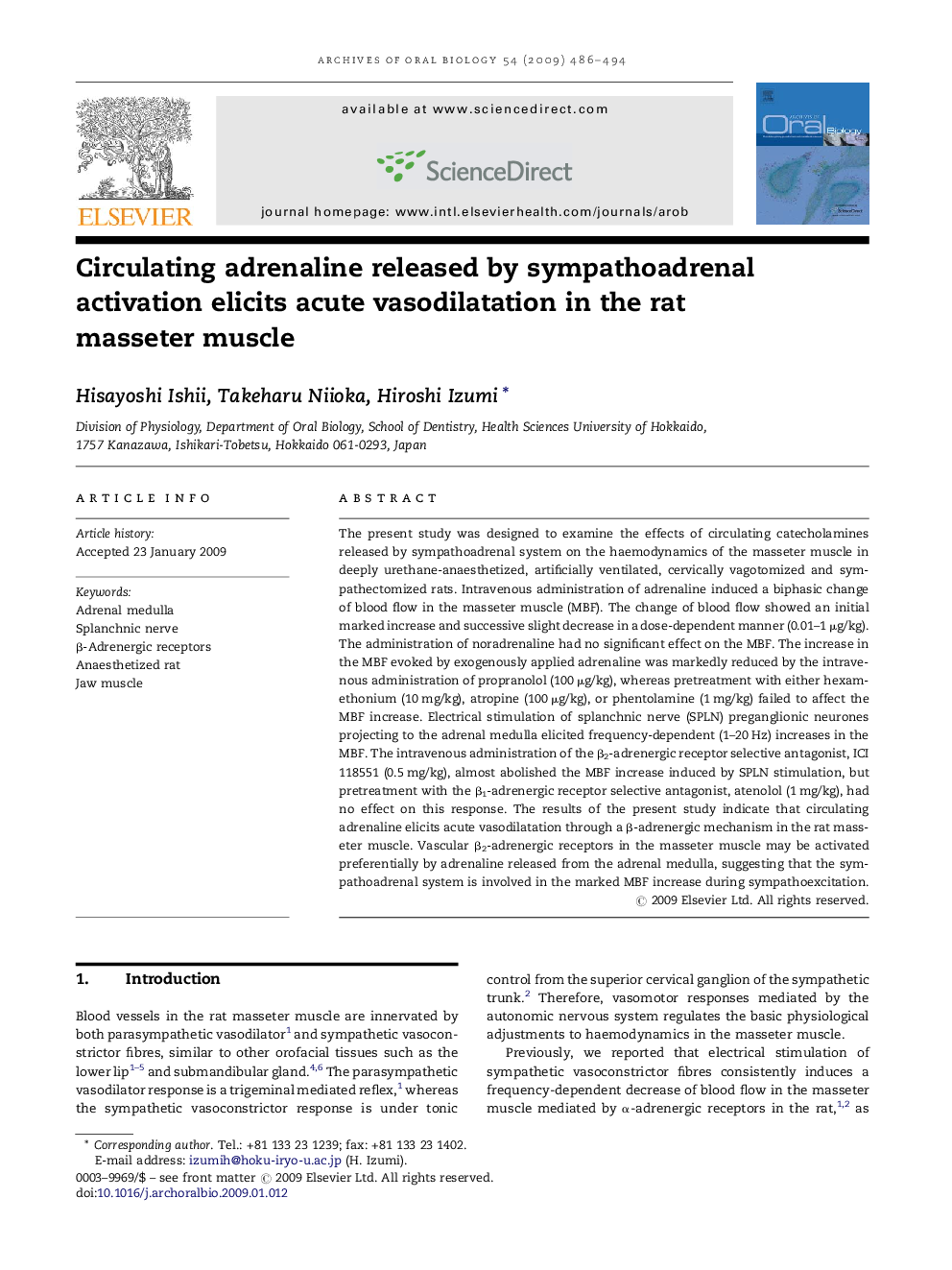| Article ID | Journal | Published Year | Pages | File Type |
|---|---|---|---|---|
| 3121227 | Archives of Oral Biology | 2009 | 9 Pages |
The present study was designed to examine the effects of circulating catecholamines released by sympathoadrenal system on the haemodynamics of the masseter muscle in deeply urethane-anaesthetized, artificially ventilated, cervically vagotomized and sympathectomized rats. Intravenous administration of adrenaline induced a biphasic change of blood flow in the masseter muscle (MBF). The change of blood flow showed an initial marked increase and successive slight decrease in a dose-dependent manner (0.01–1 μg/kg). The administration of noradrenaline had no significant effect on the MBF. The increase in the MBF evoked by exogenously applied adrenaline was markedly reduced by the intravenous administration of propranolol (100 μg/kg), whereas pretreatment with either hexamethonium (10 mg/kg), atropine (100 μg/kg), or phentolamine (1 mg/kg) failed to affect the MBF increase. Electrical stimulation of splanchnic nerve (SPLN) preganglionic neurones projecting to the adrenal medulla elicited frequency-dependent (1–20 Hz) increases in the MBF. The intravenous administration of the β2-adrenergic receptor selective antagonist, ICI 118551 (0.5 mg/kg), almost abolished the MBF increase induced by SPLN stimulation, but pretreatment with the β1-adrenergic receptor selective antagonist, atenolol (1 mg/kg), had no effect on this response. The results of the present study indicate that circulating adrenaline elicits acute vasodilatation through a β-adrenergic mechanism in the rat masseter muscle. Vascular β2-adrenergic receptors in the masseter muscle may be activated preferentially by adrenaline released from the adrenal medulla, suggesting that the sympathoadrenal system is involved in the marked MBF increase during sympathoexcitation.
